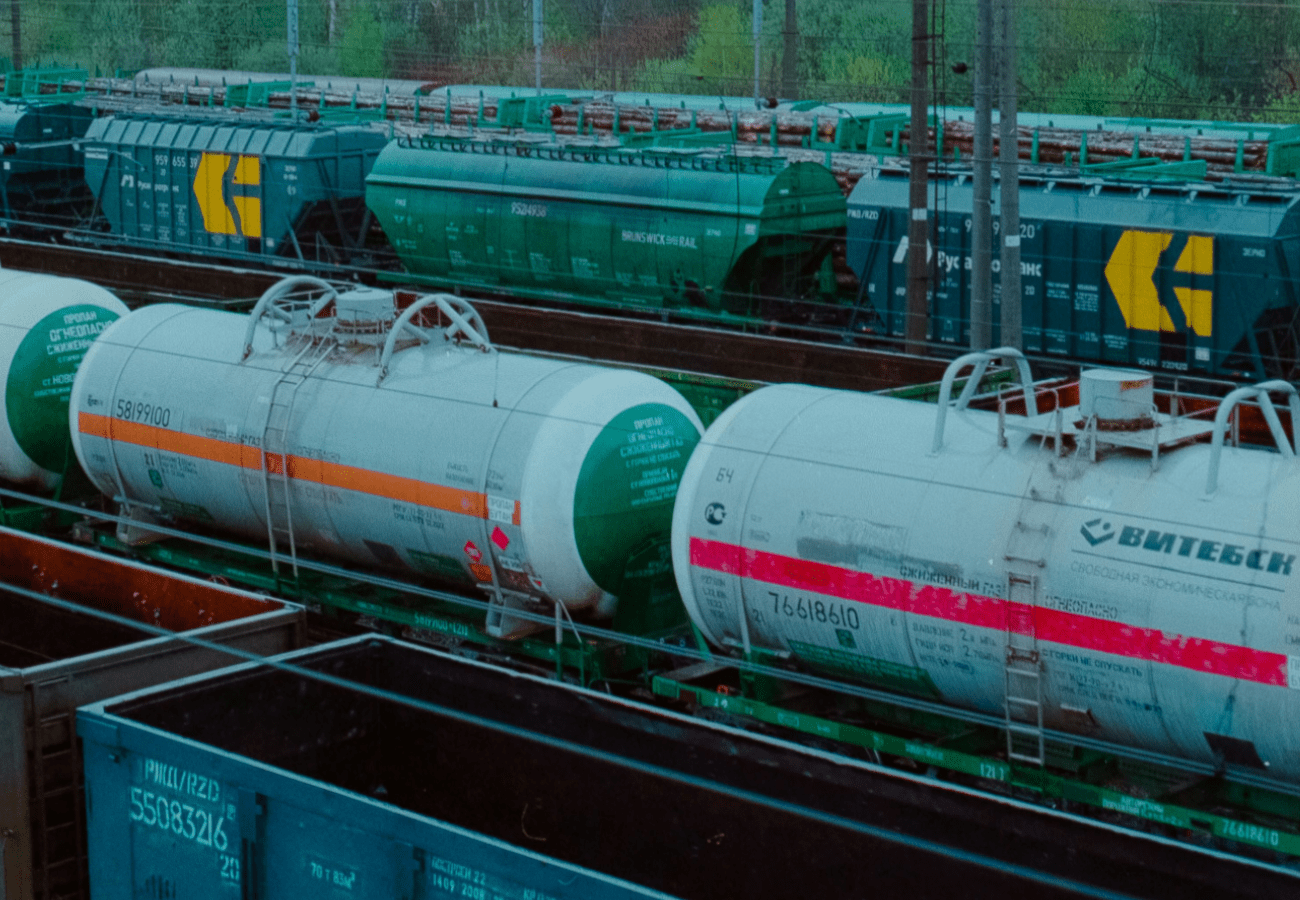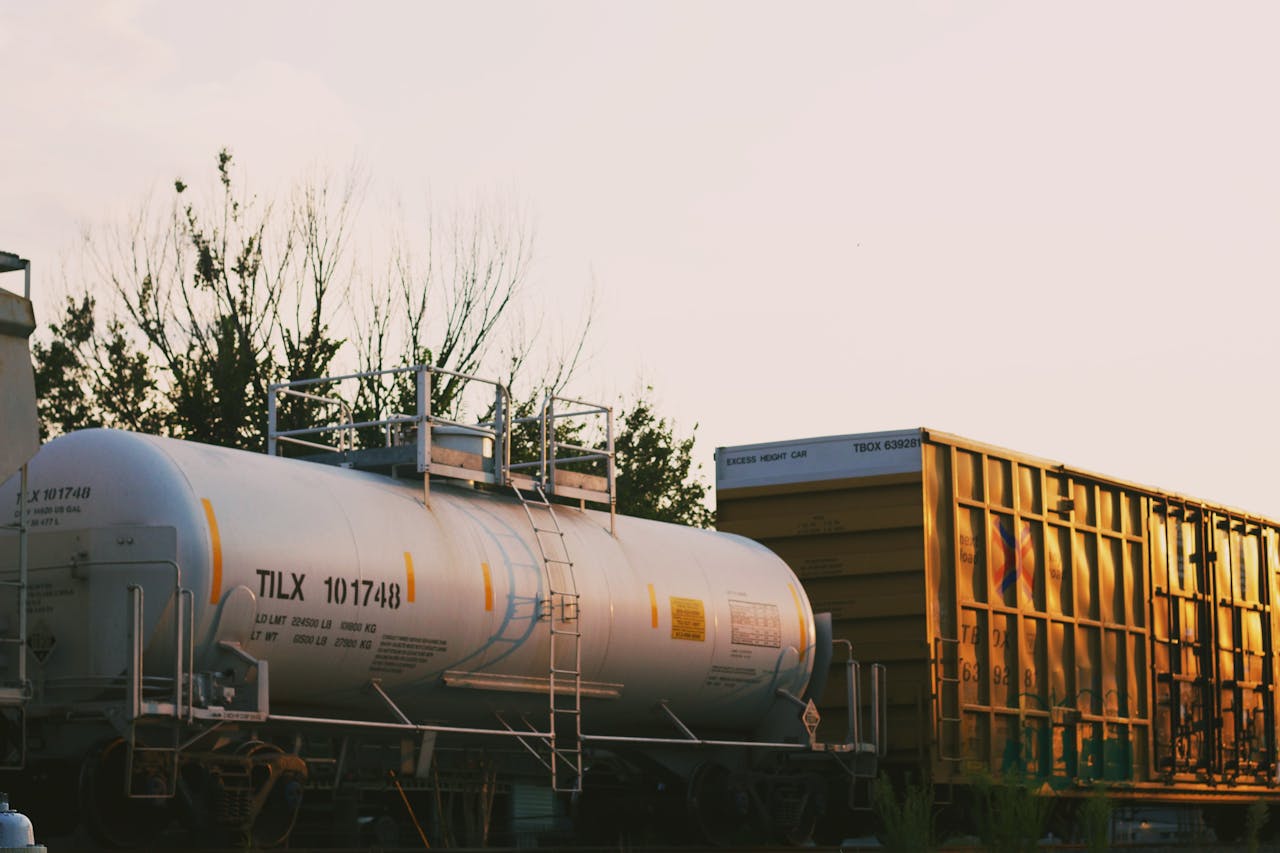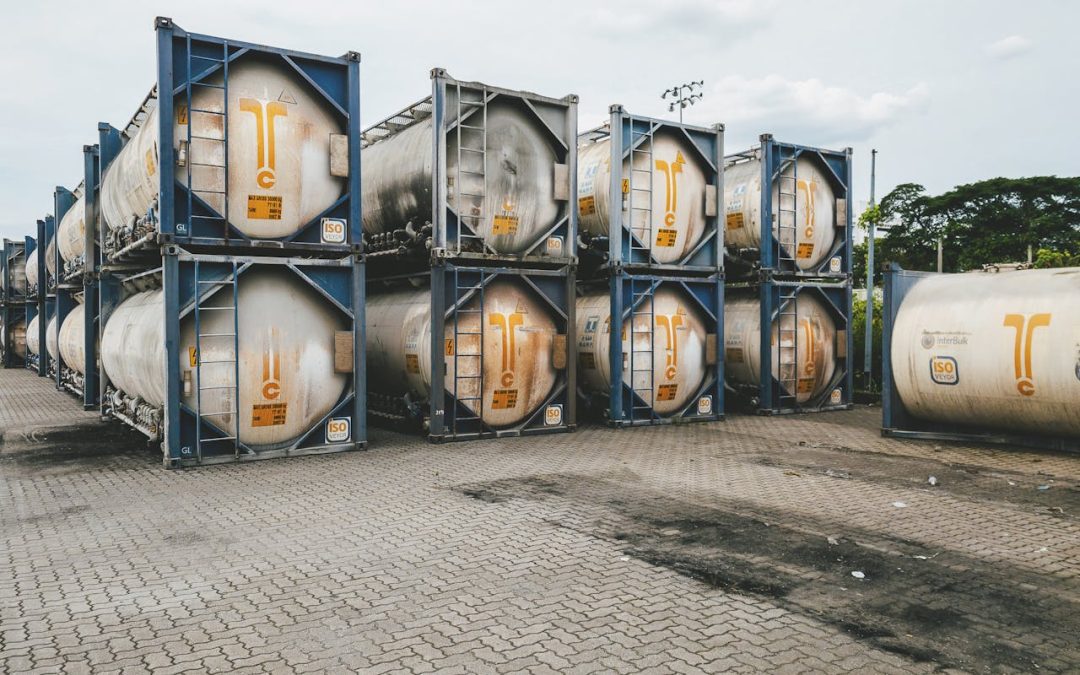مؤثر مواد کی شپنگ صرف ٹک ٹک کے بارے میں نہیں ہے۔ جب آپ ممکنہ طور پر خطرناک سامان کو A سے B میں منتقل کررہے ہیں تو ، یہ لوگوں ، املاک اور اپنے آس پاس کے ماحول کی حفاظت کے بارے میں ہے۔
برطانیہ کے حکومت کے اعدادوشمار کے مطابق ، برطانیہ کے اندر سڑک کے راستے منتقل ہونے والے تمام سامانوں میں سے 5 ٪ کو محفوظ ہینڈلنگ کے طریقہ کار اور مطابقت پذیر مال بردار حلوں کی تعمیل کرنے میں ناکامی سنگین جرمانے ، کارگو دوروں اور یہاں تک کہ ٹرانزٹ میں ہونے والے حادثات کا باعث بن سکتی ہے۔
ملینیم کارگو میں ، ہم کاروباری اداروں کو مضر مواد کو محفوظ طریقے سے ، موثر اور مکمل ریگولیٹری تعمیل کے ساتھ بھیجنے میں مدد کرتے ہیں۔ مضر مواد کو سمجھنے سے لے کر عام دھچکے کے کاروبار کو دریافت کرتے وقت ان کا سامنا کرنا پڑتا ہے ، یہ بلاگ پہلی بار صحیح طور پر حاصل کرنے کے لئے آپ کو جاننے کی ضرورت ہر چیز کا احاطہ کرتا ہے۔
مضر مواد کی حیثیت سے کیا شمار ہوتا ہے؟
'مضر مواد' کی اصطلاح سے دھماکہ خیز مواد اور آتش گیر مائعات کی تصاویر کو تقویت مل سکتی ہے ، لیکن کچھ دیگر عام مثالوں سے آپ کو حیرت ہوسکتی ہے۔ بہت سارے روزمرہ کے سامان ، جیسے ایروسول ، پینٹ ، صفائی ستھرائی کی مصنوعات ، خوشبو اور لتیم بیٹریاں بھی اس زمرے میں آتی ہیں۔
اقوام متحدہ کے ماڈل کے ضوابط مضر مواد کو نو کلیدی کلاسوں میں درجہ بندی کرتے ہیں:
- کلاس 1: دھماکہ خیز مواد (جیسے آتش بازی)
- کلاس 2: گیسیں (جیسے ایروسولز ، پروپین)
- کلاس 3: آتش گیر مائعات (جیسے پینٹ ، ایندھن)
- کلاس 4: آتش گیر ٹھوس (جیسے میچز)
- کلاس 5: آکسائڈائزنگ مادے (جیسے بلیچ)
- کلاس 6: زہریلا اور متعدی مادے
- کلاس 7: تابکار مواد
- کلاس 8: سنکنرن (جیسے بیٹری ایسڈ)
- کلاس 9: متفرق (جیسے لتیم آئن بیٹریاں)
لتیم آئن بیٹریاں ایک مضر مواد کی ایک عمدہ مثال ہیں جو اکثر ریڈار کے نیچے اڑتی ہیں-اکثر سنگین نتائج کے ساتھ۔ بہت سارے کاروباروں کو ان بیٹریاں کا احساس نہیں ہوتا ہے ، جو فونز ، پاور ٹولز اور لیپ ٹاپ میں مل سکتے ہیں ، ان کو نقل و حمل کے لئے خصوصی ہینڈلنگ اور دستاویزات کی ضرورت ہوتی ہے۔
قواعد: آپ کو کیا جاننے کی ضرورت ہے
مؤثر سامان ٹرانزٹ کے دوران بھڑک اٹھا ، پھٹ یا لیک ہوسکتا ہے ، خاص طور پر اگر ناقص پیک یا غلط طریقے سے سنبھال لیا جائے۔ مضر مواد کی شپنگ لہذا ایک بھاری بھرکم ریگولیٹڈ عمل ہے۔ یہاں کلیدی ضابطوں کا ایک راستہ ہے:
- ADR یہ قواعد برطانیہ اور یورپ میں سڑک کے ذریعے خطرناک سامان کی نقل و حرکت پر حکمرانی کرتے ہیں۔
- imdg . اس کوڈ میں سمندری مال بردار سامان کا احاطہ کیا گیا ہے ، جو مال بردار جہازوں پر محفوظ ہینڈلنگ اور اسٹوج کو یقینی بناتا ہے۔
- IATA . یہ ہوا کے ذریعہ مضر مواد کی شپنگ کا عالمی معیار ہے۔
مضر سامان کے ضوابط کے مطابق رہنے کے ل your ، آپ کی کھیپ میں خطرے کی کلاس کے لئے مناسب مصدقہ پیکیجنگ ، مناسب لیبلنگ اور صحیح دستاویزات ہونی چاہئیں۔ دستاویزات میں اکثر ایک خطرناک سامان نوٹ (DGN) اور سیفٹی ڈیٹا شیٹ (SDS) شامل ہوتا ہے۔ یہ دستاویزات مضر سامان کی شپنگ میں شامل ہر شخص کے لئے ضروری ہینڈلنگ اور اسٹوریج کی معلومات فراہم کرتی ہیں۔
قواعد کی تعمیل میں ناکامی سے کاروباروں کو بہت زیادہ رقم خرچ ہوسکتی ہے۔ 2016 میں ، خوردہ فروش وشال ایمیزون برطانیہ کو 65،000 ڈالر جرمانہ عائد کیا -اور اسے درست درجہ بندی یا دستاویزات کے بغیر غیر اعلانیہ ایروسولز اور لتیم آئن بیٹریاں بھیجنے کی کوشش کے بعد-60،000 ڈالر قانونی اخراجات ادا کرنے کا حکم دیا گیا تھا۔

پیکیجنگ ، لیبلنگ اور کاغذی کام لوازمات
جب آپ مضر مواد بھیج رہے ہو تو ، درستگی ضروری ہے۔ مضر مواد کو محفوظ طریقے سے بھیجنے کے لئے کلیدی ضروریات یہ ہیں:
غیر منظور شدہ پیکیجنگ
کاروباری اداروں کو لازمی طور پر کنٹینر اور مواد کا استعمال کرنا چاہئے جن کا تجربہ کیا گیا ہے اور مخصوص طبقے کو مضر بھلائی کے لئے تصدیق کی گئی ہے۔
لیبلنگ صاف کریں۔
پیکیجوں کو واضح طور پر نشان زدہ لیبلوں کو ظاہر کرنا چاہئے جو خطرے کی کلاس ، اقوام متحدہ کے نمبروں اور ہینڈلنگ نمبروں کی تفصیل سے ہیں۔
درست دستاویزات
ایس ڈی ایس اور ڈی جی این کو درست طریقے سے مکمل کرنا چاہئے اور شپمنٹ کو بالکل ٹھیک کرنا چاہئے ، اور متعلقہ کاغذی کارروائی پر ہنگامی ردعمل سے رابطہ جمع کرنا ہوگا۔ ایسی دستاویزات جو یہاں تک کہ سب سے چھوٹی تضادات کو بھی اجاگر کرتی ہیں ، جیسے غلط مقدار یا مبہم مصنوعات کی تفصیل ، کسٹم میں کھیپ سے انکار کر سکتی ہے۔
مضر شپنگ میں فریٹ فارورڈر کا کردار
جب آپ مضر مواد بھیج رہے ہو تو ایک قابل اعتماد فریٹ فارورڈنگ پارٹنر کے ساتھ کام کرنا صرف ایک اچھا کام نہیں ہے۔ یہ ضروری ہے۔ ہزاریہ جیسے ماہر فارورڈر خطرناک سامان کی نقل و حمل کی پیچیدگیوں کو سمجھتا ہے اور آپ کو آسانی کے ساتھ ضوابط پر تشریف لے جانے میں مدد کرسکتا ہے ، اس بات کو یقینی بناتا ہے کہ آپ کے سامان کو پہنچیں جہاں انہیں وقت پر اور بغیر کسی تناؤ کے ہونے کی ضرورت ہے۔
ہم گاہکوں کی مدد سے:
- محفوظ ، تعمیل اور لاگت سے موثر کیریئر اور روٹ کے امتزاج کا انتخاب۔
- سڑک ، سمندر اور ہوائی مال بردار سامان کے لئے ضابطے کی ضروریات کا انتظام کرنا۔
- عام غلطیوں کو پکڑنا ، جیسے غلط لیبل یا ایس ڈی ایس کی تفصیلات ، اس سے پہلے کہ وہ بڑے مسائل ہوجائیں۔
مضر مواد کی شپنگ کرتے وقت عام غلطیاں
یہاں تک کہ سب سے زیادہ قابل جہاز بھی انسانی غلطیاں کرسکتے ہیں۔ آئیے خطرناک سامان کو سنبھالتے وقت عام غلطیوں پر ایک نظر ڈالیں ، اور ان سے کیوں فرق پڑتا ہے۔
انڈر ڈیکلرنگ
کچھ کاروبار اخراجات یا کاغذی کارروائیوں سے بچنے کے ل their اپنے سامان کی نوعیت یا مقدار کو کم کرنے کا شعوری فیصلہ کرتے ہیں۔ اس سے ہینڈلرز ، جہاز اور کاروبار کو خود ہی خطرہ لاحق ہوتا ہے اور کافی جرمانے ، ضبطی یا قانونی چارہ جوئی کا باعث بن سکتے ہیں۔
غلط پیکیجنگ کا استعمال کرتے ہوئے
مضر سامان کو منظور شدہ پیکیجنگ میں بھیجنا ضروری ہے جو حفاظتی سخت معیارات پر پورا اترتا ہے۔ نا مناسب پیکیجنگ کا استعمال راہداری کے دوران رساو ، آلودگی یا دھماکوں کا باعث بن سکتا ہے۔
گمشدہ یا غلط کاغذی کارروائی
خطرناک سامان کی ترسیل کے ساتھ صحیح کاغذی کارروائی کے ساتھ ہونا چاہئے - عام طور پر ایس ڈی ایس اور ڈی جی این۔ چھوٹی غلطیاں ، غیر واضح معلومات یا غلط تفصیلات کسٹم ، تاخیر اور یہاں تک کہ شپمنٹ مسترد ہونے کے معاملات کا سبب بن سکتی ہیں۔
ناتجربہ کار ایجنٹوں اور کیریئر کا انتخاب
ہر فریٹ ہینڈلر کو مضر سامان سے نمٹنے کے لئے تربیت نہیں دی جاتی ہے۔ ایسے کیریئر کا استعمال کرنا جو علاقے میں تجربہ کار نہیں ہیں اور صحیح سرٹیفیکیشن نہیں رکھتے ہیں اس سے غلط فہمی ، عدم تعمیل اور شپمنٹ انکار کا باعث بن سکتا ہے۔
مضر مواد کی شپنگ کرتے وقت ٹھیک ہونے کے لئے بہت کچھ ہے۔ ہزاریہ کارگو جیسے قابل اعتماد فارورڈر کے ساتھ شراکت داری کا مطلب ہے کہ آپ یقین دہانی کر سکتے ہیں کہ آپ کی کھیپ محفوظ طریقے سے ، قانونی طور پر اور وقت پر اس کی منزل تک پہنچ جائے گی۔

مؤثر مواد شپنگ آسان ہو گیا
جب آپ مضر مواد بھیج رہے ہو تو عدم تعمیل کے سخت اصول اور سنگین نتائج ہیں۔ لیکن اگر آپ کسی فارورڈر کے ساتھ شراکت کرتے ہیں جو جانتا ہے کہ وہ کیا کر رہے ہیں ، کو دباؤ ، یا خطرناک ہونے کی ضرورت نہیں ہے۔
اگر آپ کا کاروبار مضر سامان کو سنبھالتا ہے تو ، آئیے اس بات کو یقینی بنائیں کہ آپ کی ترسیل محفوظ ، قانونی اور شیڈول کے مطابق رہیں۔ ماہر کے مشورے اور نوآبادیاتی مشاورت کے لئے آج ملینیم کارگو سے رابطہ کریں

